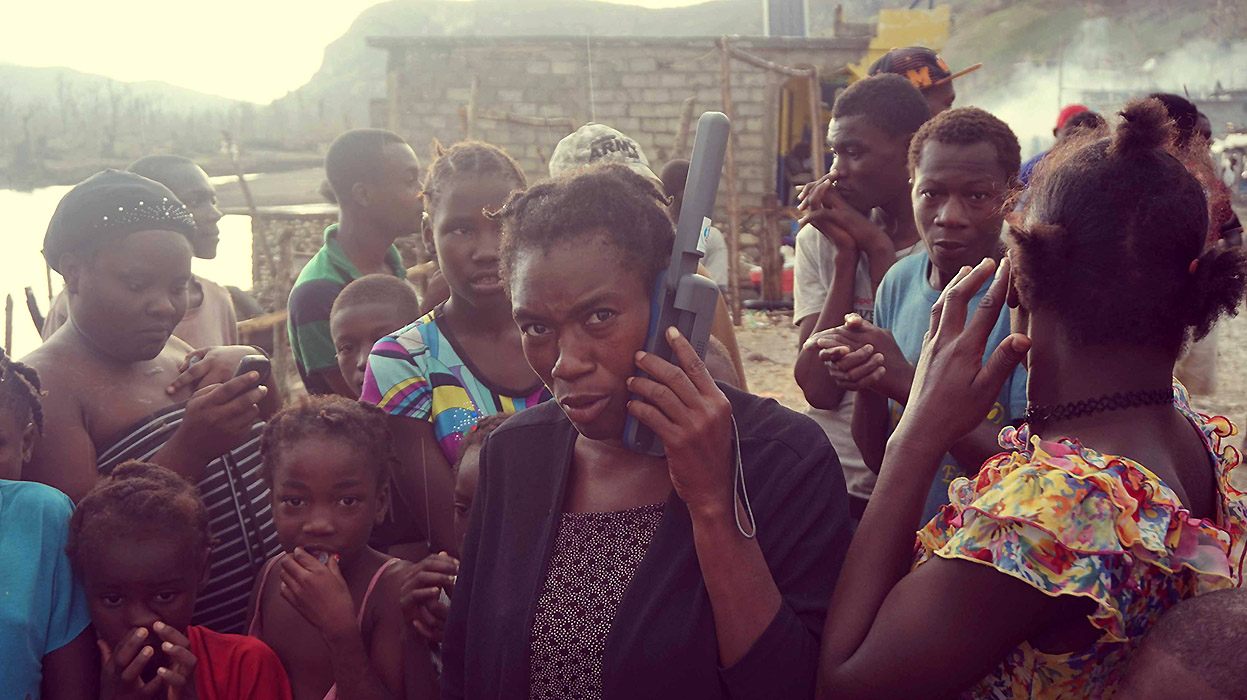Hurricane Matthew
Context: Hurricane
Start date: 03/10/2016
End date: 19/01/2017
Areas of intervention:
- Grand’Anse
- Sud
Activities:
- Telecoms assessment
- Support to national coordination
- Humanitarian calling operations
2 coordination centres
417 GB of data transferred
550 beneficiary families
1,052 calling minutes
19 communities covered
Context
On 3rd October 2016, category 4 Hurricane Matthew hit Haiti’s southwest coast, moving northbound with sustained wind speeds of up to 233 km/h, causing 546 fatalities. According to the United Nations, over one million people were affected by the disaster.
The departments of Grand’Anse and Sud were heavily impacted by the wind and flooding. Matthew travels slowly across the country, destroying in its path the road and bridge infrastructures, as well as the electricity and telecommunications networks, thus isolating the entire region throughout the first few days.
The absence of communications means was particularly incapacitating for the national coordination mechanism, preventing key information from being escalated for the organisation or rescue and relief efforts. TSF deployed on 4th October 2016 with the necessary emergency communications equipment to respond to the needs that arose.
Pre-positioning
Since the devastating earthquake in 2010, Télécoms Sans Frontières has maintained a response capacity in Haiti alongside the country’s National Scouts Association (ANSH – Association Nationale des Scouts d’Haïti). Emergency telecommunications kits were dispatched throughout the country in order to provide an immediate telecoms response in the event of a sudden-onset disaster.
When the alert for Hurricane Matthew was received, TSF and the ANSH coordinated with the Haitian Civil Protection department (DPC – Direction de la Protection Civile) and the National Emergency Operations Centre (COUN – Centre d’Opérations d’Urgence National) in order to support the humanitarian response before the arrival of TSF on the ground.
For more information on TSF’s pre-positioning in Haiti, consult our article "Haiti capacity building 2010.
Support to national coordination
Amongst the first on the ground, TSF provided the first means of communication (internet and voice) in the two departments isolated by the hurricane. This support facilitated the flow of primary assessment results (such as damage, victims, priority needs), and improved coordination and rescue efforts dispatched from the capital, Port-Au-Prince.
TSF brought its assistance to the National Risk and Disaster Management System (SNGRD – Système National de Gestion de Risques et Désastres) by setting up two mobile satellite connections in the Departmental Emergency Operations Centres (COUD – Centres d’Opérations d’Urgence Départementaux) in the towns of Jérémie and Les Cayes. These operations hubs are the nerve centres of humanitarian response, centralising needs and coordinating aid.
In order to respond to the increasing number of humanitarian workers in these two centres, TSF replaced the mobile satellite connections by two fixed antennas, thus allowing a higher number of users and broader possibilities of usage by local and international organisations.
So as to guarantee the availability and the maintenance of these connections throughout the post-emergency phase of the Haiti response, TSF transferred the management of the connection in Les Cayes to its partner, the UN Emergency Telecommunications Cluster (ETC). TSF preserved the connection in Jérémie for a further three months following withdrawal and remotely managed its maintenance from the organisation’s headquarters offices.
Thanks to internet access, the humanitarian community and the national coordination system were able to consolidate and harmonise their emergency and post-emergency responses, with a total data transfer of 417 GB.
Humanitarian calling operations
Alongside the Scouts Association, TSF led calling operations amongst Haiti’s population in the southwest of the country. Affected families were able to contact their loved ones both in Haiti and abroad, notably in the United States of America where there is a large expatriated Haitian community. These operations meant that families were able to notify people of their situation, and in many cases, request assistance that would increase their resilience and independence during reconstruction.
The teams carrying out the calls responded to the needs of families without any means of communication, with each benefiting from an average of five minutes per call. In total, 550 families were able to contact their loved ones in the 19 towns that TSF identified as isolated throughout the course of its assessments.
























